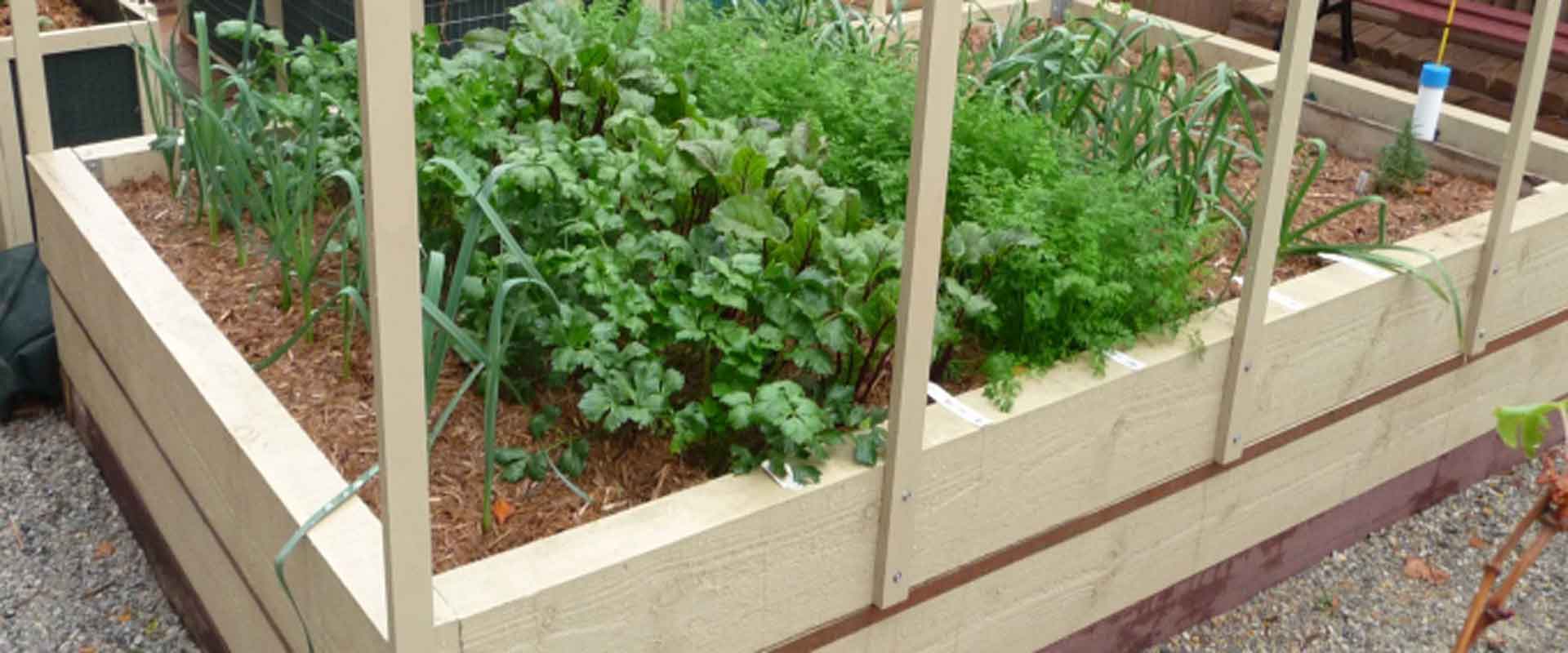The Living Soil
When I started experimenting with wicking beds a few years ago, I was concerned about the isolation of the wicking bed’s soil. The bed’s water tank was an effective barrier to the biodiversity in the rest of the garden, so I decided to fit a build-in worm farm and populate it with composting worms to try to maintain a viable separate ecosystem.
It soon became apparent, that soil fertility required more than the worm farm could deliver, and composting worms were not the best species to distribute their vermicasts throughout the bed.
I started to populate the bed with earthworms from my compost heap and garden beds. I top dressed the soil with compost and rockdust under a thick mulch of straw. I did this every time I harvested a crop in preparation for the next one, leaving it to “mature” for several weeks before planting. I found lots of earthworms in the compost residue when I planted my new crop, and crop health and growth rate improved noticeably.
Colin Austin in his blog Waterright began to talk about the symbiotic relationship formed between mycorrhizal fungi and the plants through their roots, and how he sets up bio-packs to establish a mycorrhizal network of hyphae (an extremely effective micro root system) which new plants can hook into and share. His interest prompted me to research soil biology on the net to see if I could understand it better.
I came across the Soil Foodweb Inc., and Dr Elaine Ingham who provided some very interesting insights through her series of YouTube interviews, SOIL not DIRT. She explains the soil food web as a system involving an extraordinary diversity of organisms living in their billions in natural soil including earthworms, bacteria, fungi, nematodes, arthropods and protozoa.
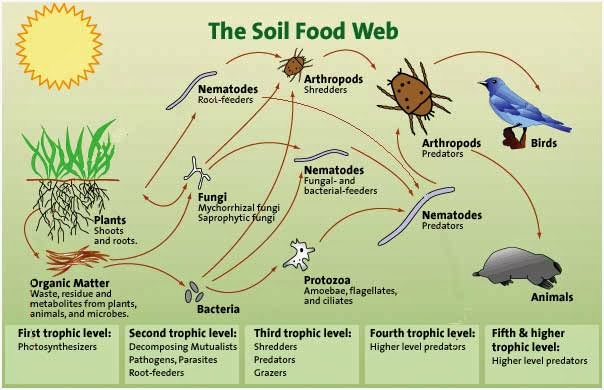
The soil food web includes the plants and animals above ground which are so dependent on the activities of the organisms in the soil. They help feed the microbes with their waste including dead and decaying organic matter.
In natural soils, earthworms (and other small animals and insects) harvest this organic material from the surface and drag it underground. They consume it and, in the process, shred and grind it so that when evacuated from their bodies it is in a form which is perfect for the microbes to feed upon. Bacteria, fungi and nematodes break down this material, rich in essential minerals, and liberate more minerals from sand and clay particles in the soil. They absorb these essential minerals into their bodies, and their predators convert the minerals into a form easily assimilated by the plant’s roots. Note that the sand and clay particles have been formed over millions of years from geological action on the parent bedrock and that is the primary source of all the minerals used by the plants to make our food, in natural soil.
This intense activity by the soil organisms, not only provides readily available food for the plants, they create a structure in the soil which enables free movement of air and water, and easy passage for roots as they grow. Water drains easily through this structure so that the soil does not stay wet for too long, but also retains some of the moisture, so the soil does not dry out too quickly.
It’s a well known saying amongst organic gardeners that you should feed the soil not the plants. I don’t know whether old time gardeners realised this meant feeding the microbes. Anyway, I now realise why it is so important to maintain the soil food web, and that using pesticides, herbicides and inorganic chemical fertilisers is such a bad idea.
Like Colin Austin, I am keen to convey the message to as many people as will listen, that industrial agriculture with its dependence on synthetic inorganic fertilisers is producing food so deficient in vital micronutrients, that we are becoming dependent on supplements to maintain bodily health. Why would you not eat organic food, and preferably, grow your own in your own garden.
If you are interested in my quest to develop a gardening system which uses very little water, which sequesters carbon and is as sustainable as I can make it, take a look at my non-commercial blog from time to time.
Article copyright to John Ashworth.
Photo: The Soil Foodweb Institute
Worm Wicking - One Year On
Last August, I wrote an article for SGA about my first attempt at a Sustainable Wicking Worm Bed. For details see (https://www.sgaonline.org.au/sustainable-wicking-worm-bed/). The bed above is a larger version developed to suit the needs of my small suburban back yard.
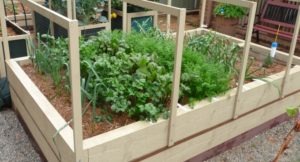 I have kept the size down because I will need 4 of these to replace my conventional 4 bed crop rotation system, and I have limited space. The length of wicking beds is restricted only by the available length of plastic liner, but usually their width is limited by the distance you can reach without climbing all over it. This bed is 2700mm long x 1650mm wide x 600mm deep.
I have kept the size down because I will need 4 of these to replace my conventional 4 bed crop rotation system, and I have limited space. The length of wicking beds is restricted only by the available length of plastic liner, but usually their width is limited by the distance you can reach without climbing all over it. This bed is 2700mm long x 1650mm wide x 600mm deep.
I have smaller specialised beds for growing dwarf fruit trees (Meyer lemon and Hamlin orange), Tomatoes and Strawberries (runners just planted). The Tomato bed is growing Broccoli until it gets warm enough for Tomatoes.
I have used the past 12 months gathering knowledge and applying it to the first wicking worm bed I made. I learned that the bed worked extremely well using very little water and maintaining a moist soil ideally suited to growing vegetables. The worm farm prospered in the moist conditions consuming about 1 litre of finely chopped kitchen/garden waste per week. The bed above is using twice that quantity. Two different types of worm inhabit my wicking worm beds. These are composting worms and burrowing earthworms.
Composting Worms are surface dwellers that thrive in decomposing organic matter. 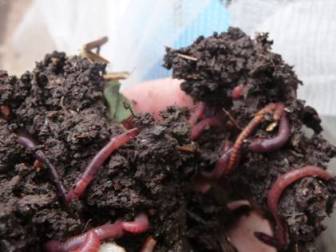 They prosper in the ideal conditions provided by a wicking bed worm farm with its consistent moist environment, protected from predators and shaded from sunlight. My composting worms are a mix of the following:-
They prosper in the ideal conditions provided by a wicking bed worm farm with its consistent moist environment, protected from predators and shaded from sunlight. My composting worms are a mix of the following:-
Red Wrigglers [Lumbricus Rebellus].
TigerWorms[Eisenia Fetida].
Indian BlueWorms[Perionyx Excavatus.
Garden worms burrow deep into the soil creating nutrient rich pathways for plant roots to colonise as well as fertilising the soil. They distribute nutrients and micro-organisms from the worm farm through the plant growing area. Their tunnels provide efficient distribution of water and air to the plants roots. When establishing a new wicking worm bed, I harvest garden worms from soil in my conventional organic garden beds, and supplement these by buying Amynthus Gracious/Cortius worm eggs.
Despite the high levels of microbial activity in the bed and the continuous supply of nutrients from the worm farm, I top up the soil after harvesting a crop with rich material from my compost heap. The bed has an isolated ecosystem, and I need to maintain this supply of diverse micro-fauna originating in the larger garden ecosystem.
I also inoculate some of my plants with Mycorrhizal Fungi (available on the internet) by dusting the seeds before sowing them, or the root ball when planting seedlings. This fungi develops a symbiotic relationship with plants by penetrating their roots to set up nutrient exchange sites. They then send their long fine root like Hyphae in search of nutrients and water. The Hyphae exude enzymes dissolving rock and lignin in the soil, releasing nutrients and building soil structure.
In return for the fungi’s supplies of nutrients and water, the plant manufactures vitamins and carbohydrates for the fungi’s use. Unfortunately Brassicas and beets do not form symbiotic relationships with Mycorrhizae.
I don’t dig the soil in my wicking worm beds; it breaks up the structure and disturbs the worms too much. The soil doesn’t get compacted because it is continuously aerated by the worms and micro-organisms in the soil.
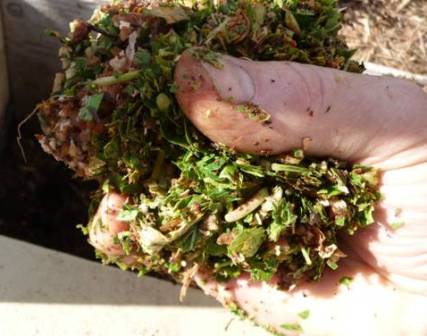 I use very little fertiliser to supplement the finely chopped kitchen/garden waste I supply to the worms. However, before planting crops, I add a little blood and bone and rock dust to the beds surface. If the growth of flowering and fruiting plants is too lush and sappy, I supply extra potassium by adding seaweed extract to the bed’s water tank. A little lime is added as a surface dressing for plants requiring a neutral or alkaline soil. I test for pH to get this right.
I use very little fertiliser to supplement the finely chopped kitchen/garden waste I supply to the worms. However, before planting crops, I add a little blood and bone and rock dust to the beds surface. If the growth of flowering and fruiting plants is too lush and sappy, I supply extra potassium by adding seaweed extract to the bed’s water tank. A little lime is added as a surface dressing for plants requiring a neutral or alkaline soil. I test for pH to get this right.
I have a non commercial web site which provides detailed information on how I built my (so far) 5 above ground wicking worm beds, 1 triple in-ground wicking worm bed and 8 wicking bins for anyone who would like to try. The address is www.jas49580.blogspot.com .
Photos:
Sustainable Wicking Worm Bed
Progress Updated March 2013
When I built my first wicking worm bed 10 months ago, it was a test bed designed to gain experience with the process. My plan was to eventually convert my vegetable and fruit growing backyard from conventional organic drip line gardening to wicking worm beds. Read more


